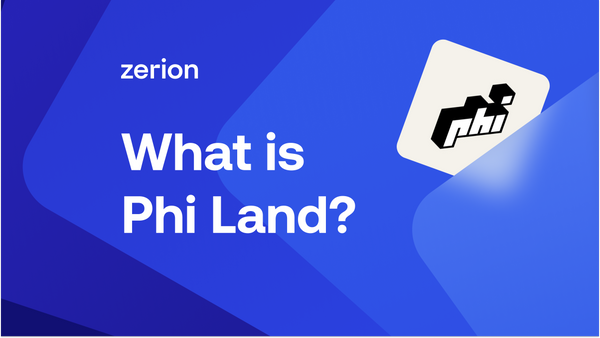If you’ve spent some time in Web3, you’ve probably heard about ‘quests’ and ‘identity’.
The problem is that most onchain quests are rather boring. And decentralized identity is an abstract concept. But not with Phi Land: it’s arguably the most fun way to explore Web3 and express your onchain identity.
Phi Land, however, could be overwhelming for newbies. This post is here to help: we’ll explain what Phi Land is, how quests and lands work, and how you can get started.
What is Phi Land?
Phi Land is a Web3 social gaming world with onchain activities.
The two main parts are Quests and Lands. Quests are activities that you can complete and claim cool voxel NFTs. And Lands are the spaces where you can place those NFTs.
Why bother?
First, it’s a fun way to explore different protocols. Most quests are put together by Phi Land’s partners, which are top protocols like ENS, Lens, Aave, and others.
Second, it’s competitive. There are several leaderboards to climb. It’s also just cool to show off a land with lots of curious objects — it’s way more engaging than showing a wallet address. Who knows, maybe a well-developed land can even help you land a job in Web3.
Finally, it’s a weirdly addicting game. It’s fun to play without any ponzinomics. This is a rare feat for a Web3 game.
Now, let’s see how you can get started.
How Phi Land quests work
Phi Land quests are straightforward: you complete the task and can claim an NFT with a voxel object.
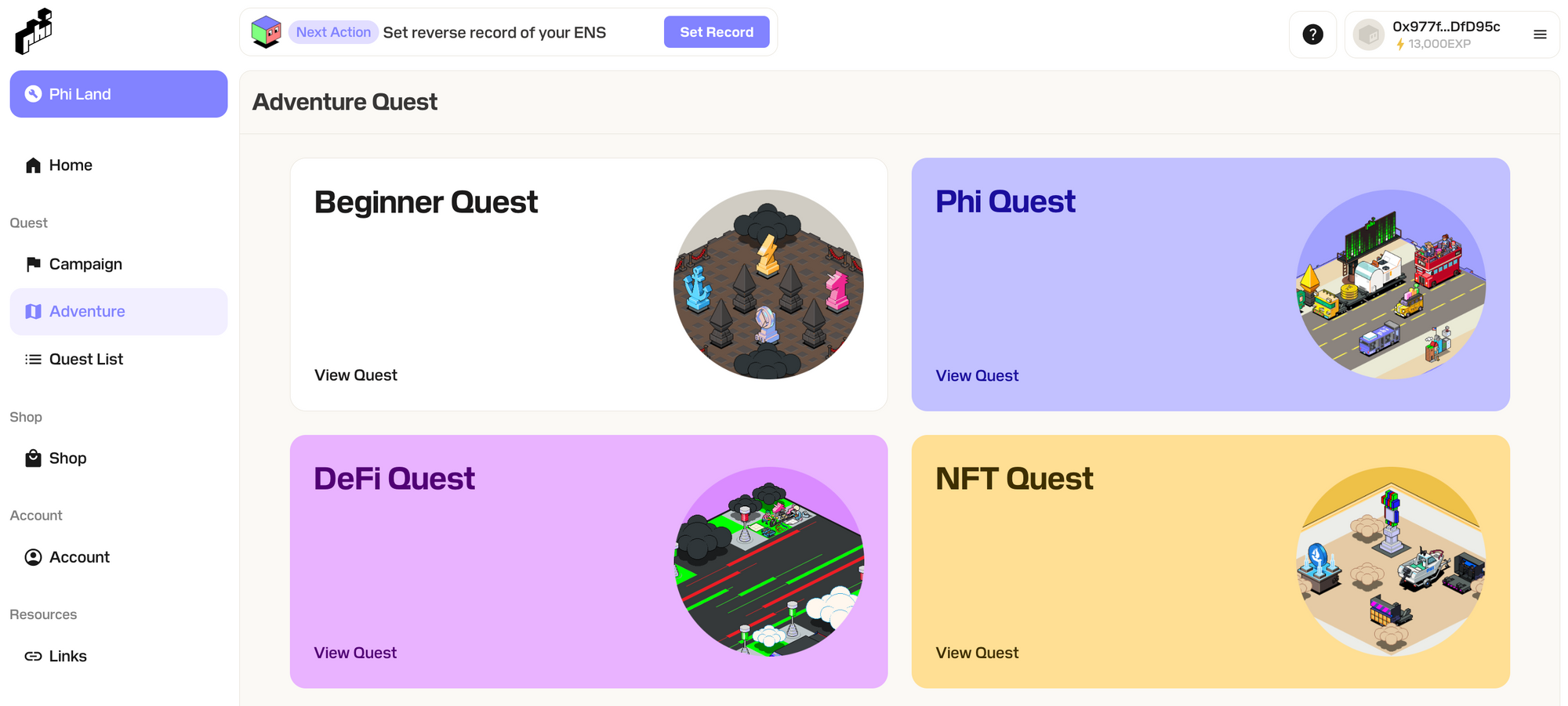
There are three types of quests. Adventures are series of onboarding quests dedicated to speccific niches, such as DeFi, NFTs, DAOs. Campaigns are time-limited quests with unique rules and prizes. Finally, there are also individual quests offered by various partners.
Quests are held on different networks: mainnet Ethereum, Polygon, zkSync, and so on. To complete the quest, you need to do the action on the specific network.
If you hold a Zerion DNA, the easiest quest for you is the Zerion Electronic Board:
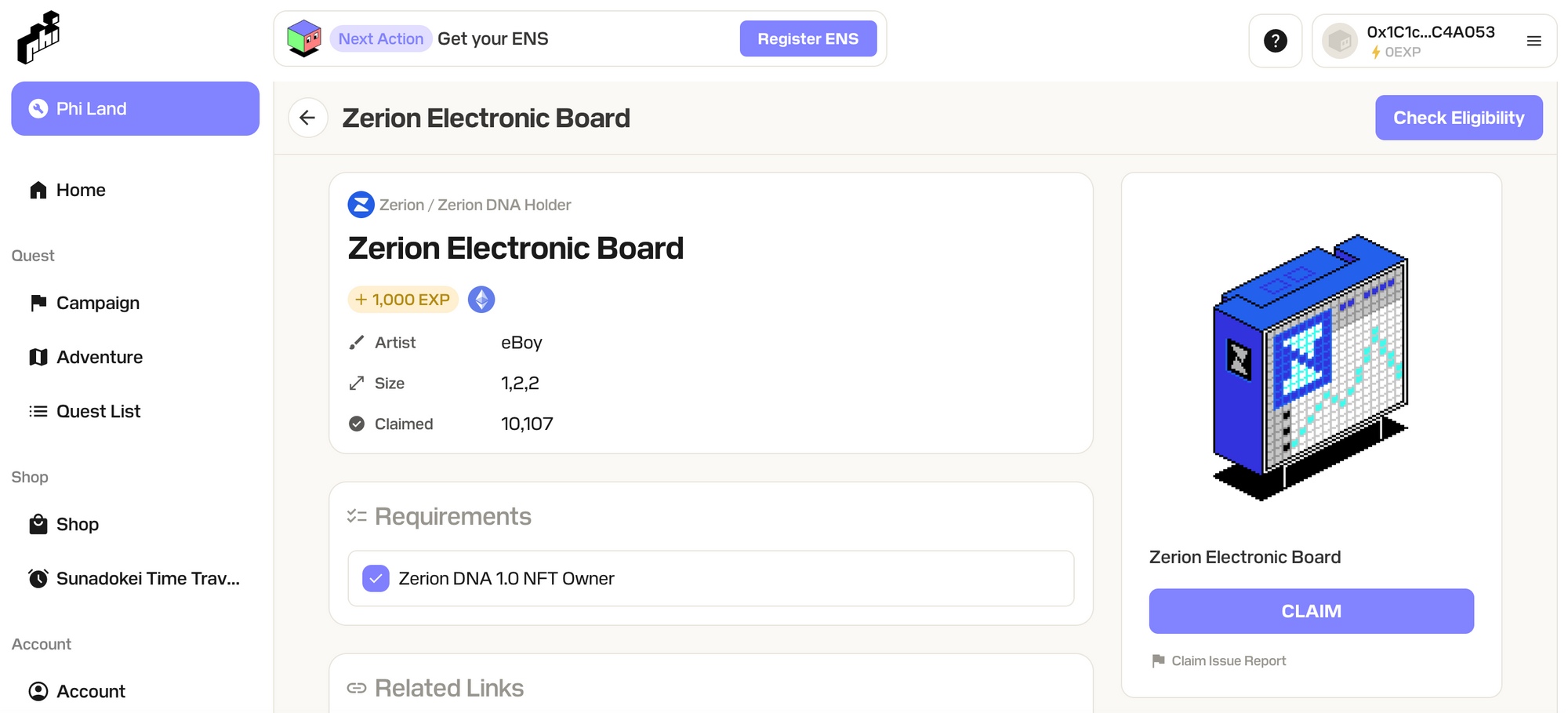
- Connect your wallet with the Zerion DNA by choosing Wallet Connect and then scanning the QR coe
- Click ‘Check Eligibility’
- If you hold a Zerion DNA and are eligible, you will see the ‘Claim’ button. Click it!
- Approve the transaction in your wallet, you’ll need some MATIC for gas
- That’s it, you’ll get the NFT in your wallet
Phi Land NFTs are cool on their own by they are meant to live on ‘lands’.
Make your first land
Land is a virtual space in Phi Land where you can place your prized NFT objects.
To create a land, you need 2 things:
- An ENS domain, because each land is connected to an ENS
- MATIC to pay for gas on because building/editing on the land happes onchain on Polygon PoS
Once you create a land, it’s empty.
To add objects to it, you need to first transfer them from your wallet to the Phi Land contract. You can do this by clicking the ‘Edit’ button and then selecting the objects you want to deposit. This will trigger an onchain transaction that will move your NFTs from your wallet to the smart contract.
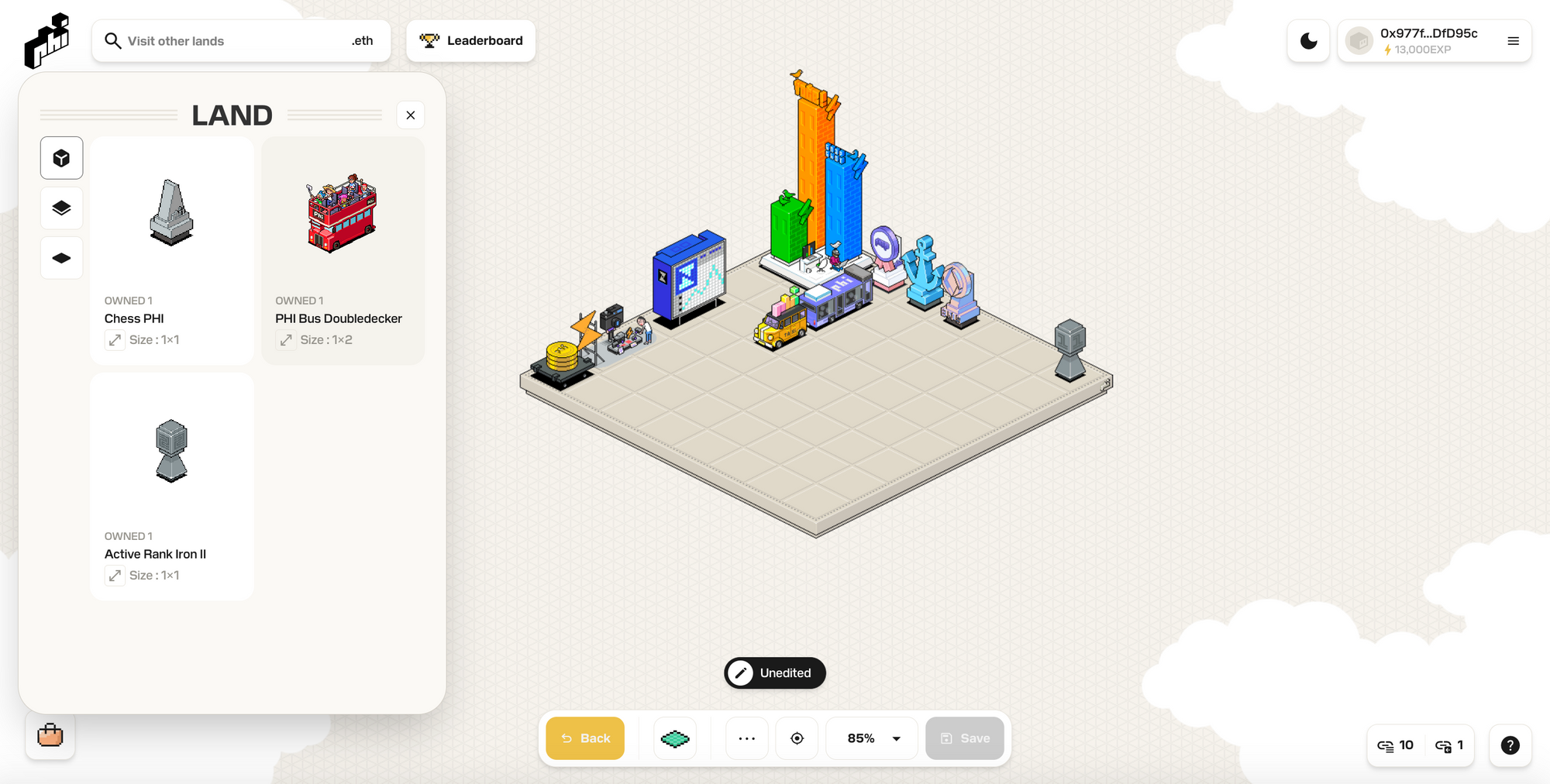
Once NFTs are deposited, you can place the objects on your land. Click ‘Edit’ and then place the objects. Each object can also create links to other lands.
Create links to other lands
Objects in your land can also have hyperlinks to other lands or external websites — both will be useful to completing some quests.
Linking to people you know effectively builds your social graph. For now, there isn’t much utility for that apart from pure fun of linking to friends.
You can also link to your website, social media profiles, or anything else.
To create a link, just click on any object on your land and then click the 'link' icon. After that, just enter your desired URL and title.
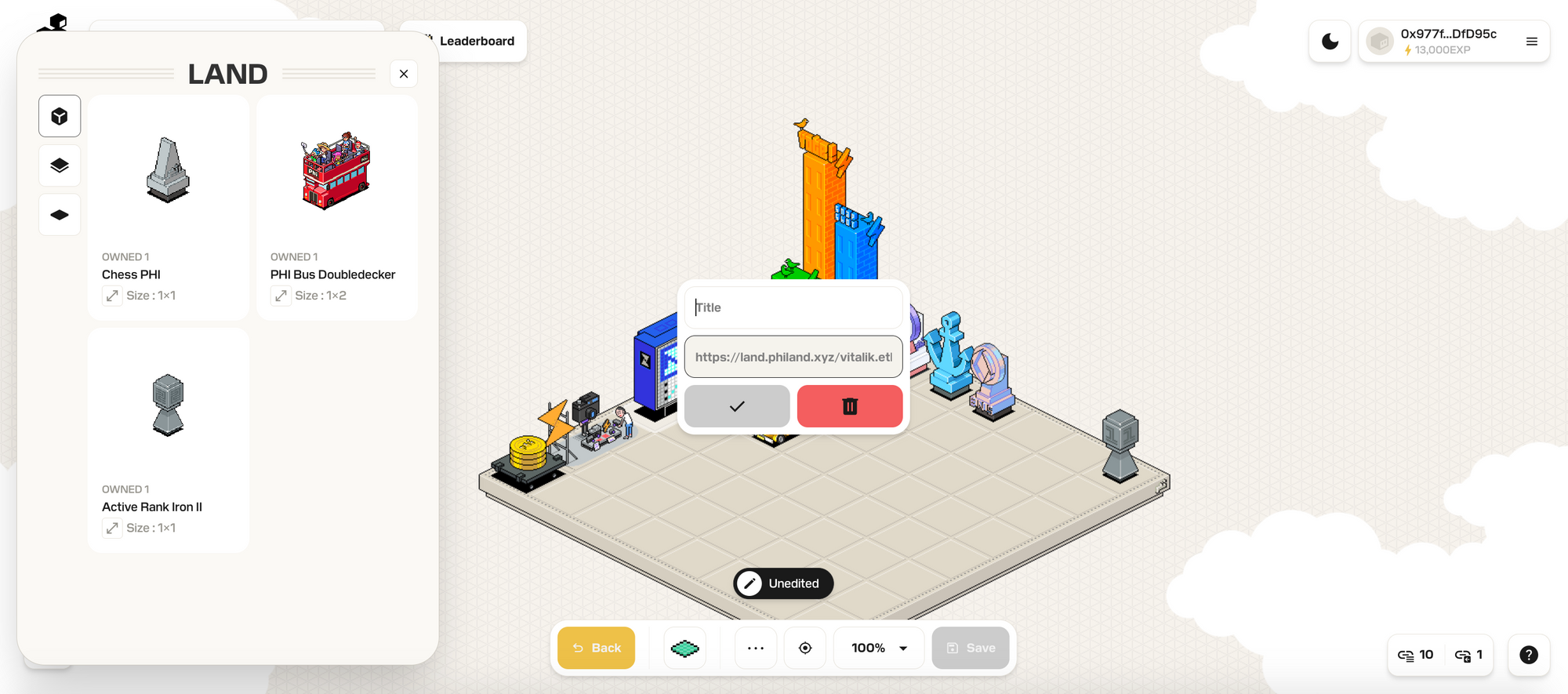
First, however, you need more objects. Go ahead and complete Adventure quests for beginners (those are on mainnet Ethereum so you might want to wait until gas is reasonable).
You can also go to the list of all quests and check your eligibility based on your previous onchain activity — just click ‘Check All Eligibility’.
What’s next
Phi Land might eventually get its own token.
The best way to qualify for any potential Phi airdrop is to actively use the dapp and build up your lands.
Even without a token, Phi Land is a fun way to learn more about Web3 and show off your onchain identity.

